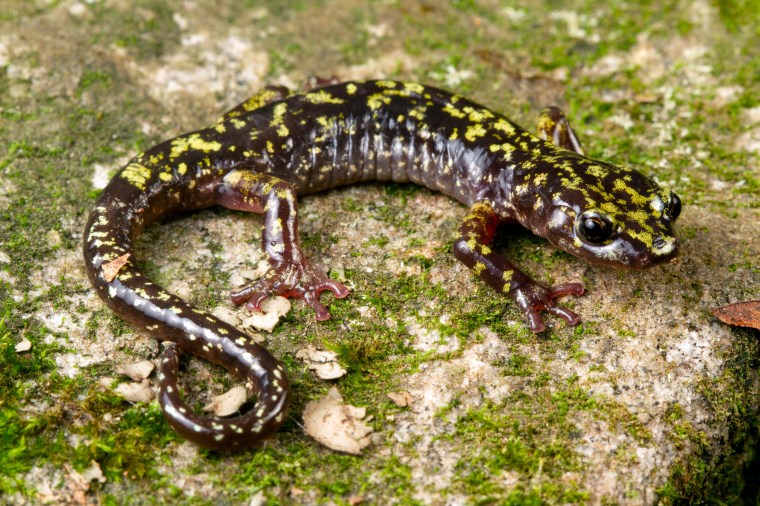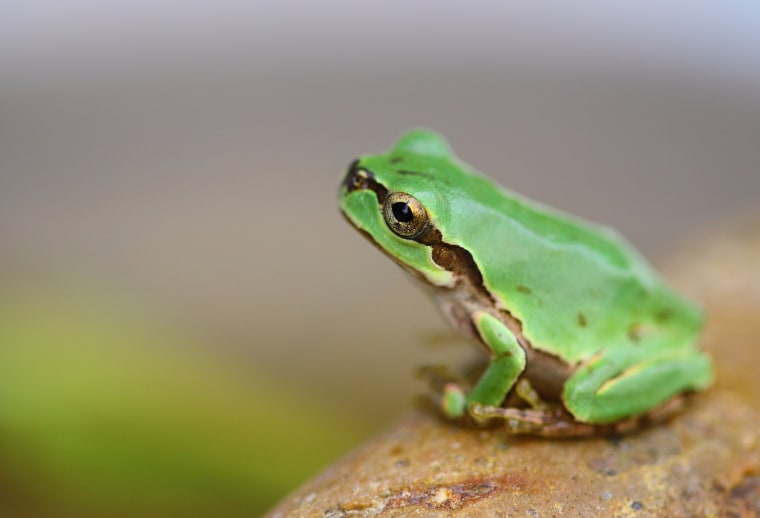Amphibians are in decline worldwide, with 2 out of every 5 species threatened by extinction, according to a paper published Wednesday in the scientific journal Nature.
Researchers evaluated the health of more than 8,000 amphibian species around the world and determined that nearly 41% — 2,871 in total — are globally threatened. The number of threatened species has grown by nearly 3% since 1980, as habitat loss, climate change and disease push more animals toward the brink.
“To survive in the face of this rapidly changing climate here on Earth, amphibians must adapt to these changes or move elsewhere,” said a lead author of the paper, Kelsey Neam, a species and metrics coordinator for the non-governmental organization Re:wild. “In many of these cases, changes are happening too quickly for them to adapt, and habitat fragmentation is creating barriers that make moving around extremely challenging.”
Amphibians are vertebrates like frogs, toads and salamanders. They can inhabit both land and water, and they typically breathe through their skin, which is often moist to the touch.
The new study is a comprehensive view of their plight, assessing more than 93% of known amphibian species. It shows how humans are reshaping the world at a rapid rate and how climate change — a growing worry for amphibians — overlaps with other concerns, like land conversion and spread of disease, to put them on a dark path.
The report relies on data from the second Global Amphibian Assessment, which was completed last year. More than 1,000 subject matter experts contributed assessments about thousands of species.
Adam Leaché, a professor of biology at the University of Washington who is also a curator at the Burke Museum of Natural History and Culture in Seattle, said the study represented a “big update on the conservation of amphibians across the globe.”
Leaché, who was not part of the research group, said that the analysis was thorough and comprehensive and that it was led by some of the premier researchers of amphibians in the world.
“In general, I think the patterns we see globally reflect what a lot of us think is happening locally, as well,” Leaché said, adding that he has seen habitat loss up close.
Leaché’s research group has conducted surveys in subtropical West Africa, tracking amphibian species in the field.

Sometimes, when he returns in later years, “they’re gone. They’ve been completely deforested,” Leaché said. “There’s no way to survey for biodiversity; nothing’s there.”
Climate change is a growing problem for amphibians.
“We know amphibians are particularly sensitive to changes in their environment, in part because they breathe through their skin,” Neam said at a news conference. “The effects of climate change, including the increasing frequency and intensity of extreme weather events — such as storms and floods and droughts, changes in moisture, changes in temperatures, sea level rise, fires — all of these things can result in loss of important breeding sites for amphibians.”
Amphibians have also been dealing with their own pandemic — from the Chytrid fungus, which has spread rapidly around the globe, infects amphibians’ skin, prevents them from rehydrating properly and causes heart attacks.
“Modern climate change really works synergistically with diseases and in ways that it stresses frogs and makes them more vulnerable to these pathogens,” said Patricia Burrowes, a professor in the biology department at the University of Puerto Rico.
Amphibians play critical roles in the food web, and they are often eaten by birds, fish and mammals. They are also part of the biodiversity that sustains human life. Some have been important in medical research.
Leaché hunts for news species, like some other herpetologists. He said that when he meets regular folks in the course of that work, his conversations rarely center on frogs’ important ecological roles or their medicinal uses.
Instead, people tell him stories of their early days — “the good ol’ days,” as Leaché described it — seeing salamanders at a swimming hole or hearing croaks out their windows.
“It’s reminiscing about better times when species were around, and now they’re not here anymore,” he said.
